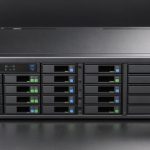Overview of Docker Secrets Management
Effective Docker secrets management is vital for maintaining the security and integrity of sensitive data. In essence, Docker secrets are used to store valuable information like passwords, API keys, or SSL certificates needed by services and applications running on Docker. Their main importance lies in the secure handling and controlled access of confidential data, ensuring only authorized applications can retrieve and use these secrets.
Docker Swarm, a leading container orchestration tool, plays a crucial role in secrets management. Within Docker Swarm architecture, secrets are encrypted and securely distributed among the nodes needing access. This integration streamlines the access control process, ensuring efficient and safe dissemination of sensitive data across the necessary containers.
In the same genre : Enhance your woocommerce store with powerful plugins
Despite these secure handling practices, weaknesses in secrets management can expose systems to vulnerabilities. Common issues arise from weak or mismanaged secrets, such as inadequate encryption, improper storage methods, or unrestricted access, which can lead to potential data breaches. To mitigate these risks, it is paramount to follow robust practices for managing Docker secrets, employ encryption, and implement strict access controls. Ensuring rigorous management prevents unauthorized access, ultimately safeguarding sensitive information from potential threats and ensuring operational security.
Tools for Managing Docker Secrets
Docker secrets management benefits significantly from leveraging dedicated tools designed to enhance security and automate processes. Docker itself offers built-in secret management features that allow you to safely store and distribute confidential information throughout containerized environments. Within Docker Swarm, these tools ensure secrets are encrypted during transit and can only be accessed by authorized services, providing a foundational layer of security.
Additional reading : Essential Tactics to Safeguard Your Jenkins Pipeline Against Frequent Security Vulnerabilities
Beyond native tools, numerous third-party secrets management tools integrate seamlessly with Docker Swarm to bolster security further. For instance, solutions like HashiCorp Vault and AWS Secrets Manager offer advanced functionality, such as dynamic secrets generation and automatic revocation services. Such tools cater to organizations seeking more granular control and robust audit capabilities over their secrets management strategies.
Automation plays a pivotal role in secrets management. By using automation tools like Jenkins or GitLab CI/CD pipelines, you can streamline routine secrets rotation, minimize manual errors, and maintain high-security standards efficiently. These automations allow for seamless integration within software development workflows, ensuring that secrets remain consistently protected across all stages of the application lifecycle. Emphasizing automation also encourages adherence to best practices, promoting secure and efficient handling of sensitive information within Docker environments.
Best Practices for Securing Docker Secrets
Securing Docker secrets is critical to maintaining robust Docker security. Adopting specific secrets management strategies helps mitigate risks and protect sensitive data.
Implementing the ‘Least Privilege’ Principle
Applying the ‘least privilege’ principle ensures that secrets are accessed only by services needing them. This minimizes potential exposure to unauthorized entities by granting minimal access rights required for service operation. Adopting this principle is one of the cornerstone best practices for secrets management.
Regularly Rotating Secrets
Regularly rotating secrets is imperative to strengthening security. Timely rotation limits the duration a possibly compromised secret remains valid, reducing the chance of exploitation. Effective secrets management strategies involve automated rotation routines to enhance security posture and minimize manual intervention.
Environment-Specific Secret Management
Tailoring secret management practices according to different environments is vital. Utilising environment-specific secrets ensures sensitive data fits the particular needs and security standards of each environment, which enhances overall Docker security. This targeted approach helps maintain an optimized security framework across diverse deployment landscapes, aligning with evolving security parameters. These best practices form a comprehensive strategy for safeguarding Docker secrets, fostering a resilient and secure container environment.
Real-World Case Studies
Real-life case studies offer invaluable insights into Docker vulnerability and the importance of protecting Docker secrets. Reflecting on past incidents, such as the Docker secret leaks at Tesla, provides a clear understanding of potential pitfalls in secrets management. In Teslas’s case, a security breach occurred when an attacker gained unauthorized access to a Kubernetes console, highlighting the critical need for robust security configuration.
Lessons learned from these case studies emphasize the necessity of employing best practices and thorough audit mechanisms to safeguard sensitive data. Effective secrets management strategies often include implementing strict access controls, regular audits, and conducting internal security assessments to fortify weak points within the system.
The key takeaways from these security incidents revolve around proactive monitoring and timely response mechanisms to mitigate risks swiftly. Organizations must foster a culture of Docker security, reinforcing security protocols and educating teams on the emerging threats in the digital landscape.
Analyzing these scenarios also underscores actionable insights such as the integration of automated secrets management tools and comprehensive training programs. By doing so, companies ensure they are better equipped to handle potential vulnerabilities, building a robust security posture that safeguards their containerized environments.
Compliance and Regulatory Considerations
Compliance and security regulations in Docker provide a framework to protect sensitive data and maintain trust. Adhering to these standards is crucial for aligning Docker governance with organisational and legal requirements. Docker users must navigate multiple regulatory landscapes, such as GDPR for data protection, which may impact containerized environments. Understanding these compliance requirements ensures proper management and security of Docker secrets.
Aligning Docker secrets management with regulatory standards involves configuring secure systems that meet legal stipulations. This requires careful selection of tools and practices that enforce stringent access controls and logging mechanisms. Regular audits help identify gaps in security configuration and ensure that systems evolve alongside new regulations. Organisations should incorporate security best practices within their Docker governance policies to bolster compliance efforts.
Maintaining comprehensive documentation and audit trails is vital for demonstrating compliance with regulations. These records provide transparency and accountability, showing which secrets were accessed, by whom, and when. Secure and detailed logs help organisations proactively recognize potential vulnerabilities and audit any suspicious activities. Establishing robust documentation habits fosters a culture of compliance, safeguarding sensitive data and strengthening overall system security.
Configuring Docker Secrets Properly
Proper Docker configuration is essential for enhancing the security configuration of your containerized environments. It begins with the precise configuration of secrets. Using Docker Compose offers clear instructions for setting up secrets by defining them in the docker-compose.yml file. Each service can declare which secrets it requires, ensuring they are accessible only to the intended recipient. This separation aids in maintaining a robust security posture.
Using Docker Compose for Secrets
Docker Compose allows secure handling of sensitive data by specifying secrets within the compose file, ensuring they’re deployed only where needed. This method simplifies secrets configuration by integrating it with application setup.
Environment Variables vs. Docker Secrets
Understanding the distinction between environment variables and Docker secrets is crucial for ensuring security configuration. While environment variables are easier to use, they expose data more widely, posing a security risk. Docker secrets securely store and distribute sensitive information, minimizing exposure risks.
Secure Networking Practices
Implementing secure networking practices is vital. Ensure encrypted communication between services and limit network exposure through strict access controls. Employ firewalls and VPNs to protect data in transit and maintain a secure flow within Docker environments.
Compliance and Regulatory Considerations
Navigating the landscape of compliance and security regulations is a crucial aspect of Docker governance. With a variety of standards such as GDPR dictating the management of data protection within containerized environments, understanding and adhering to these compliance requirements is essential.
Understanding Compliance Requirements
Docker users need familiarity with the compliance regulations applicable to their industry and location. These might include GDPR, HIPAA, or PCI-DSS, each with its own set of stipulations for handling Docker secrets.
Aligning Docker Secrets Management with Regulatory Standards
To ensure Docker secrets management aligns with regulatory standards, organizations should enforce rigorous security configurations. This includes using tools that offer stringent access controls and comprehensive logging mechanisms.
Documentation and Audit Trails
Maintaining thorough documentation and audit trails is indispensable for demonstrating compliance. Organizations should ensure detailed records of who accessed which secrets and when. Such documentation is crucial for recognising potential vulnerabilities and preserving transparency. These efforts collectively foster a culture of compliance, safeguarding sensitive data while strengthening overall system security.











